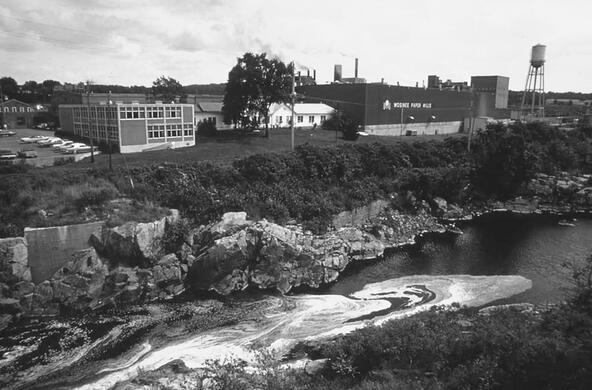As I walked through the canopy of hemlocks to reach the front door of the Cary Institute a few days ago, I was greeted by the singing of many species of birds. Although the evergreen foliage hid them from view, the variety of their songs was impressive. There were clearly many different species flitting about and singing high above my head. It was an almost boisterous spring chorus.
We owe much of this delightful medley to Rachel Carson, whose book, "Silent Spring," was published 50 years ago. She forcefully sounded the alarm that indiscriminate spraying of DDT, an insecticide that has broad killing power, was having negative effects on the environment. DDT did control target insects that damaged crops or carried human diseases. It was used to kill mosquitoes and fleas, for example, and helped bring malaria and typhoid fever under control. It was first applied extensively during World War II, to help protect the health of both soldiers and civilians.
But DDT did not discriminate between beneficial and nuisance insects. And the chemical took a heavy toll on the bees and butterflies that pollinate crops and ornamental plants. It also killed insects that are an essential part of the food chain in on our field, stream and forest ecosystems.
Beyond even that environmental damage, DDT was found to accumulate in the fat of longer-lived organisms. In the food chain, the chemical biomagnifies, with larger animals concentrating higher amounts of the toxin. Birds of prey and scavengers, as well as song birds that eat many insects during breeding and nesting seasons, can be killed by DDT. It can also interfere with bird reproduction by causing egg shells to become so thin that the weight of incubating parents can crush them.
Birds were not the only victims of DDT's ill effects. There are many studies documenting the toxicity of DDT to mammals, including humans. Usually direct toxicity isn't the problem. Rather association with diseases such as breast cancer and genetic damage are the risks of DDT in humans.
Carson's book was a wake-up call. It brought together a large body of information to indict DDT as an environmental hazard. She went on to caution about the indiscriminate use of chemicals in the environment. Such use exploded after World War II, and rarely were environmental or even health effects of the many new chemicals tested before release.
Carson, who lived from 1907 to 1964, was trained as a biologist, and held a master's degree from Johns Hopkins University. Her book was greeted with derision by representatives of chemical industries involved in the manufacture of DDT and other pesticides. But her elegant writing and careful research won out.
Her book is a milestone in the improvement of America's environment and protection of human health from chemical contamination. The subsequent ban on the broadcast spraying of DDT and controls on other chemicals that affect wild organisms and ecological food chains have been successful. Many bird and other species that were directly threatened by DDT, such as bald eagles and pelicans, have recovered from very low numbers at the height of the era of profligate spraying of DDT and related compounds.
So the delightful spring chorus I experienced on my wooded walk here at the Cary Institute recently prompts me to thank Carson, and remember her bravery in publishing "Silent Spring" 50 years ago.
Steward Pickett is a plant ecologist at the Cary Institute of Ecosystem Studies in Millbrook. He also directs the Baltimore Ecosystem Study, a multi-partner effort investigating the ecology of urban areas. Learn more at www.beslter.org.






